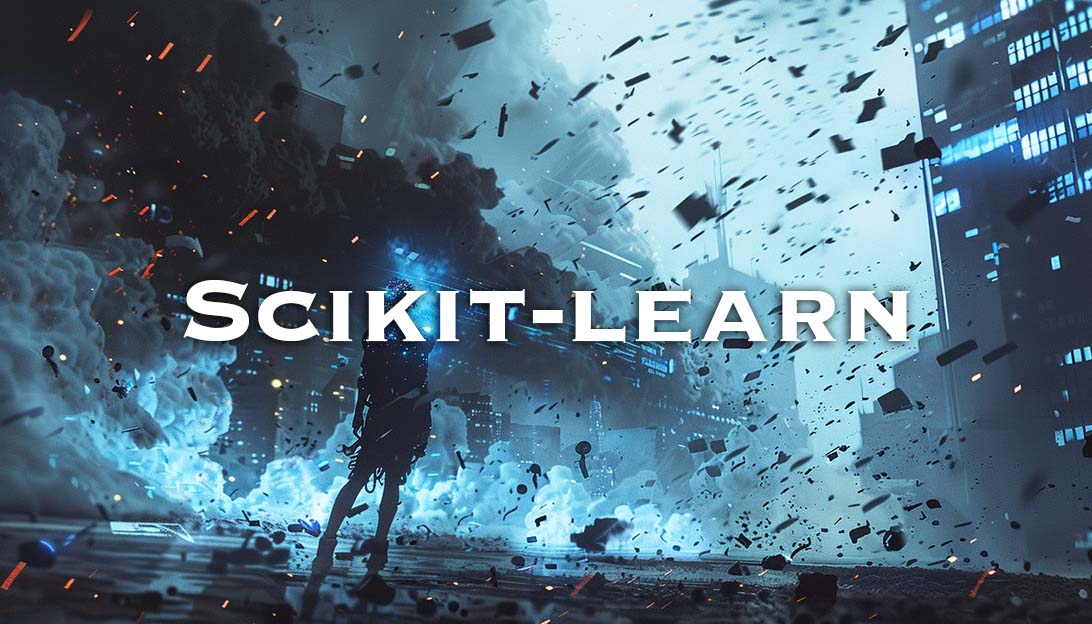About Scikit-learn. Read on as Skannar provides a deep dive into the landscape of artificial intelligence today. Open-source artificial intelligence platforms and generative, pre-trained transformers and beyond.
Continuing on our journey into the world of artificial intelligence. Today, we take a look at the platform Scikit-learn developed by David Cournapeau. Embark on an exhilarating journey through the diverse landscape of artificial intelligence, from resilient open-source frameworks to pioneering generative pre-trained transformers and beyond. Join us on an expedition into the realm of AI platforms and technologies, where we’ll unravel their intricacies and unleash their boundless potential. Through this captivating series of blog posts, prepare to delve deep into the heart of AI innovation, discovering the tools and platforms that are shaping the future of intelligent systems.
Who is David Cournapeau?
David Cournapeau is a software engineer known for his contributions to the Python programming language and the machine learning community. He is particularly renowned for his involvement in the development of Scikit-learn, a popular machine learning library in Python. Cournapeau initiated the Scikit-learn project in 2007 as part of the Google Summer of Code program. His work laid the foundation for what would become one of the most widely used tools for machine learning practitioners and researchers. While Cournapeau’s specific activities and contributions may not be as visible in recent years, his early efforts were instrumental in shaping Scikit-learn into what it is today.
So what is Scikit-learn?
Scikit-learn is one of the most popular machine learning libraries in Python. Here’s an overview of its history, core functions, development, and expansion:
History
Origin
Scikit-learn, originally known as scikits.learn, was started in 2007 as a Google Summer of Code project by David Cournapeau.
Growth
Over the years, it gained traction and contributions from the open-source community. It became a part of the scikit-learn community-driven project hosted on GitHub.
Milestones
Major releases have introduced significant features and improvements, including better support for various algorithms, scalability enhancements, and compatibility with other Python libraries.
Core Functions
Machine Learning Algorithms
Scikit-learn provides a wide range of supervised and unsupervised learning algorithms, including regression, classification, clustering, dimensionality reduction, and model selection.
Preprocessing
It offers tools for data preprocessing, including feature extraction, normalization, encoding categorical variables, and handling missing values.
Model Evaluation
Scikit-learn includes functions for evaluating model performance through metrics like accuracy, precision, recall, F1-score, and ROC curves.
Pipeline Construction
The library allows users to create machine learning pipelines to chain together multiple processing steps, such as data preprocessing, feature selection, and model fitting.
Cross-Validation
It supports various techniques for cross-validation, enabling robust evaluation of models’ generalization performance.
Development and Expansion
Community Contributions
Scikit-learn benefits from a vibrant open-source community, with developers worldwide contributing new features, bug fixes, and documentation improvements.
Regular Updates
The library undergoes regular updates to incorporate the latest research advancements and maintain compatibility with the evolving Python ecosystem.
Integration with Other Libraries
Scikit-learn integrates seamlessly with other Python libraries such as NumPy, SciPy, Pandas, and Matplotlib, enhancing its functionality and usability.
Focus on Usability
Scikit-learn emphasizes simplicity and ease of use, making it accessible to both beginners and experienced practitioners.
Scalability
Efforts have been made to improve scalability, enabling the library to handle larger datasets and leverage parallel computing resources efficiently.
Extension Modules
Certain functionalities that don’t fit into the core library are developed as separate modules, extending Scikit-learn’s capabilities further.
Educational Resources
The community provides extensive educational resources, including tutorials, documentation, and online courses, to help users learn and master Scikit-learn.
In conclusion
Overall, Scikit-learn continues to be a cornerstone of the Python machine learning ecosystem, empowering researchers, practitioners, and enthusiasts to build robust and scalable machine learning solutions. Its evolution reflects the collaborative nature of open-source development and the growing demand for accessible machine learning tools.
Be sure to follow this series and read about all the platforms making waves and huge advancements in the World of artificial intelligence (AI) AI Platforms Today
Also listen in with this great audio book from Reid Blackmon. Ethical Machines: Your Concise Guide to Totally Unbiased, Transparent, and Respectful AI
Or visit our list of best reads for the topic of Artificial Intelligence and Machine Learning ethics.
1 2 3 4 5 6 8 9 10 AI AI news ant art Artificial Intelligence automation borrow borrow a minute chatgpt coffee break Control Fiction fire water bean fiscal responsibility how many minutes How many minutes in a day how many minutes in a month how many minutes in a week how many minutes in a year Immersive Innovation ISS Machine Learning mental break minute fiction minute read model R risk SaaS short blog short story skannar story Trust where am I now


